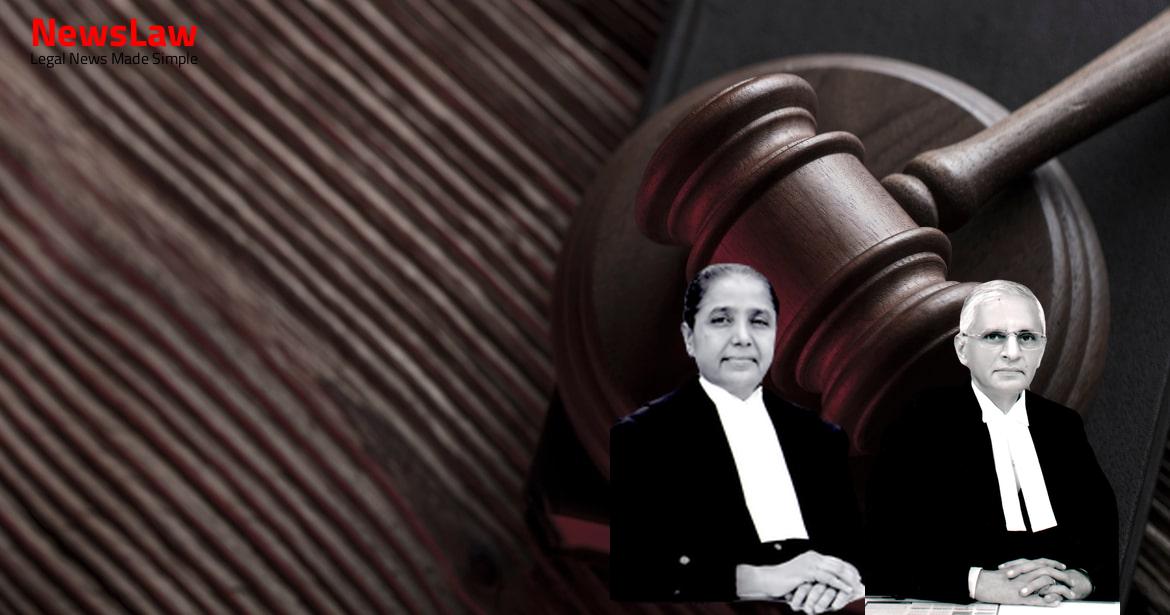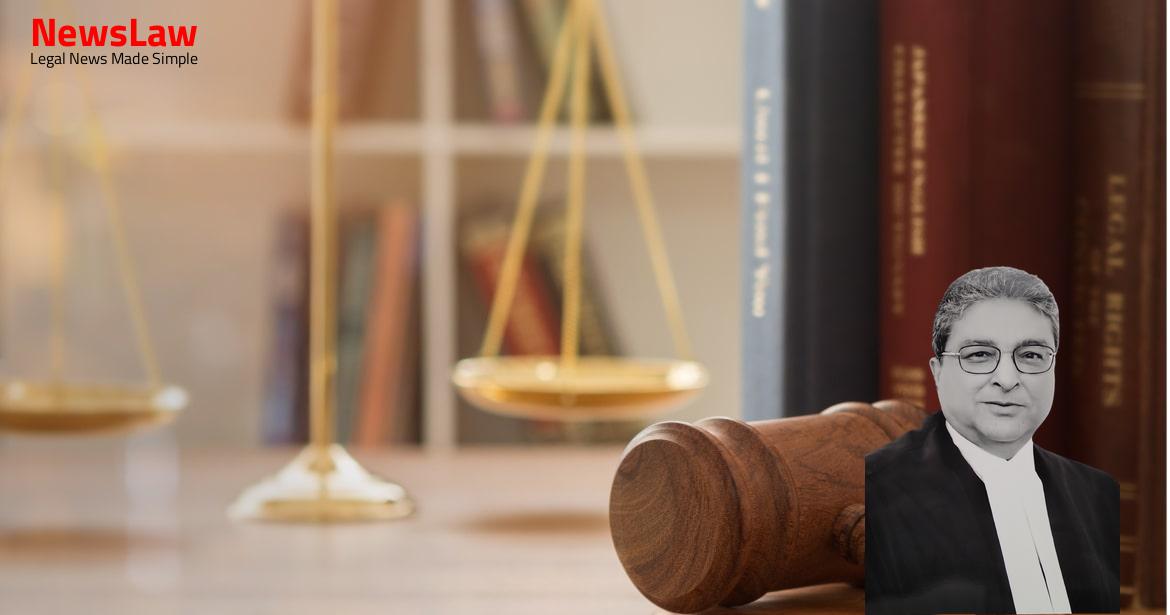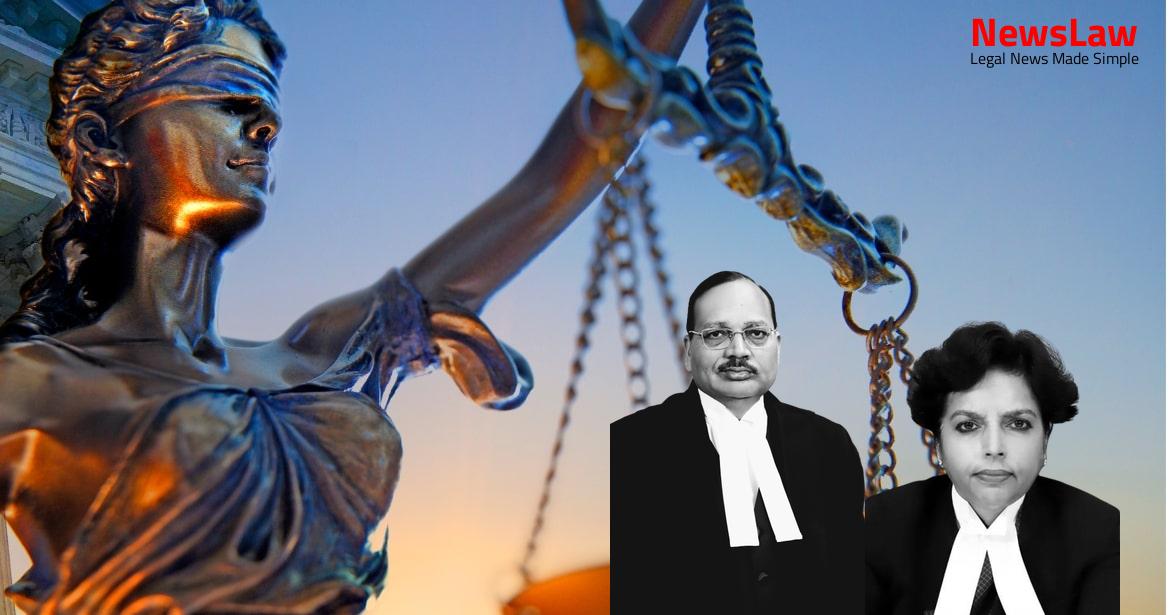In a recent landmark judgement by the Supreme Court of India, the case involving the conviction of Balaram has been thoroughly reviewed. The court upheld the decision based on the evidence presented against him in the case involving the unfortunate demise of Ram Autar. Stay tuned to learn more about the details of this case and the legal proceedings that led to this significant outcome.
Facts
- FIR was registered under various sections of IPC and M.P. Dakaiti Aur Vyapharan Prabhavit Kshetra Adhiniyam, 1981 based on the complaint by Subhadra, wife of the deceased Ram Autar.
- Post-mortem conducted by Dr. P.S. Tomar revealed multiple injuries on the deceased’s body including a gunshot wound and fractures.
- Appellants were convicted under Section 302 IPC read with Section 34 IPC and sentenced to life imprisonment along with a fine.
- Witnesses and medical evidence corroborated the prosecution’s case, including the recovery of the murder weapon at the instance of one of the appellants.
- Accused were involved in a planned attack on the deceased, leading to his death, and fled the scene when villagers arrived.
- The trial court acquitted the appellants from the offence under M.P. Dakaiti Aur Vyapharan Prabhavit Kshetra Adhiniyam due to lack of evidence of involvement with any dacoit.
- High Court invoked Section 34 IPC despite contradictions in PW-1’s statements, as the prosecution proved the common intention of the appellants in the murder of the deceased.
- The High Court affirmed the conviction under Section 302 IPC read with Section 34 IPC and imposed a life sentence on the appellants.
- Appellant No.1, Rameshwar, passed away during the pendency of the appeal, and the appeal against him abated.
- Appellant No.2’s case was presented by Mr. Nagendra Rai, learned senior counsel.
- All other accused were acquitted by the trial court from all charges.
Also Read: High Court Acquittal Case of State of Uttar Pradesh v. Jai Prakash
Arguments
- Learned senior counsel for appellant No.2 argued that there are contradictions in the evidence of witnesses regarding who fired gun shots on the deceased.
- The Dehati Nalishi (Ex.-P1) mentioned three gun shots – one by accused Rameshwar, one by accused Balaram, and one by accused Umacharan causing injuries to the deceased.
- Appellant No.2’s counsel contended that the High Court incorrectly affirmed Balaram’s conviction under Section 34 IPC due to lack of clear evidence of prior concert or meeting of minds.
- The deposition of eye-witnesses PW-1, PW-2, PW-6, and PW-7 was deemed inconsistent and contradictory, leading to an erroneous conviction as per appellant No.2’s counsel.
- The counsel representing the respondent- State argued that the High Court correctly affirmed the conviction based on the oral evidence of the eye-witnesses and other evidence.
- The contention about contradictions in PW-1’s evidence before the court and her statement in Dehati Nalishi (Ex.-P1) was raised by appellant No.2’s counsel.
Also Read: Judgment Review: Supreme Court’s Ruling on the Capital Punishment Appeal
Analysis
- The witnesses did not specify which part of the deceased the gun shot hit in the case of accused No.3 Umacharan.
- To invoke Section 34 IPC, it must be proven that the criminal act was done by more than one person in furtherance of common intention.
- The High Court held that even if appellant No.1 Rameshwar fired the gun shot, the conviction of appellant No.2 Balaram can be supported by Section 34 IPC.
- There was lack of cogent evidence against Umacharan, leading to his acquittal based on benefit of the doubt.
- The evidence against the appellants was not identical to that against the acquitted co-accused Umacharan.
- Presence of appellant No.2 at the scene was established by consistent testimony from eye-witnesses PWs 1, 2, 6, and 7.
- PWs 1 and 2 claimed appellant No.1 fired the gun shot, while PWs 6 and 7 stated appellant No.2 did so with his rifle.
- Contradictions in the witnesses’ statements were dismissed by the trial court, relying on Dehati Nalishi where PW-1 clearly mentioned appellant No.2 firing.
- PW-1’s statement in Ex.-P1 was deemed more reliable and corroborated by PWs 6 and 7.
- The post-mortem certificate indicated one gun shot injury on the deceased’s back, with corresponding seizure of cartridges and plastic pieces emitting gunpowder smell by the Investigating Officer.
- For the specific crime to be considered communal, there must be a common intention among multiple individuals to commit the crime.
- The crime must actually be committed by these individuals in furtherance of their common intention.
- Both the common intention and the actual commission of the crime are essential elements in establishing communal liability.
- Appellant No.2 was proven to have acted in furtherance of the common intention.
- His conviction under Section 302 IPC was rightly affirmed by the High Court using Section 34 IPC.
- Appellant No.2 was armed with a rifle and shared the common intention with accused Rameshwar.
Also Read: Compromise Reached: Reddy Satyanarayana vs Narapureddy Sanyasi Rao
Decision
- The appellant No.2, Balaram, is directed to surrender within six weeks to serve the remaining sentence.
- If he fails to surrender within the stipulated time, he will be taken into custody.
- The conviction of appellant No.2, Balaram, under Section 302 IPC read with Section 34 IPC is affirmed.
- The sentence of life imprisonment imposed on appellant No.2, Balaram, is upheld.
- The appeal against appellant No.2, Balaram, is dismissed.
- The appeal against appellant No.1, Rameshwar, is dismissed as abated due to his passing away.
Case Title: RAMESHWAR . Vs. THE STATE OF MADHYA PRADESH
Case Number: Crl.A. No.-002448-002448 / 2009



